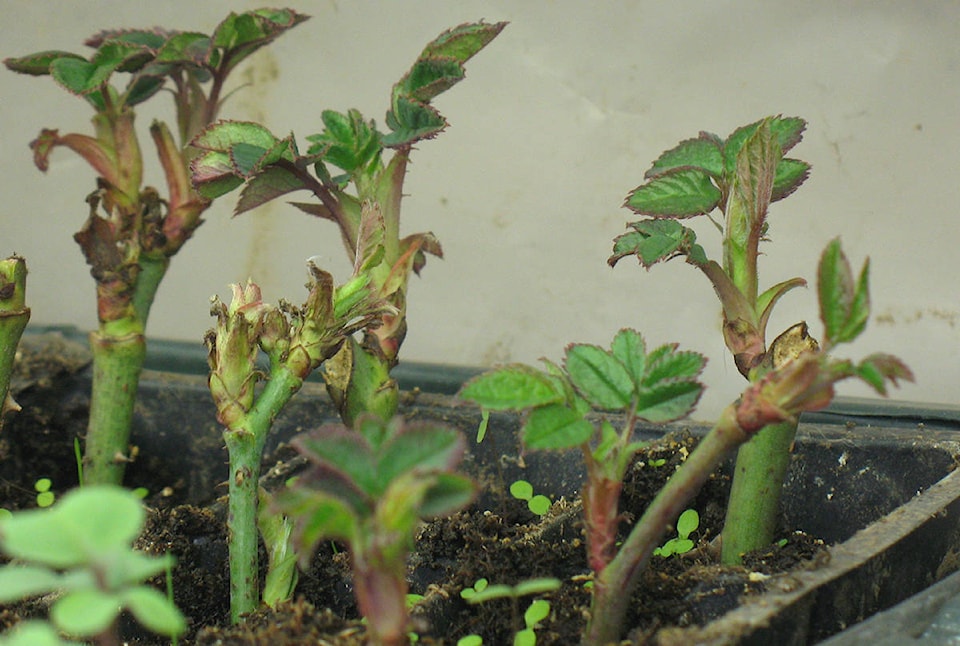At the risk of being considered esthetically challenged, I must confess that my principle interest in gardening has always been the production of good food and my opinion of flowers has consequently been based on their minimal nutritional value. When I had an allotment garden I resented the mandatory row of flowers required by the by-laws, bitterly begrudging every inch of arable soil sacrificed to the inedible, until I learned how useful flowers are to attract pollinating and predatory insects that keep my vegetables safe.
Then I met David, who taught me that woman does not live on bread alone. When he discovered I didn’t eat chocolate (it’s bad for me) he bought jewelry, and when I didn’t wear it (it gets in my way) he bought flowers. When I told him I preferred my plants alive and edible he bought me a truckload of manure and I knew I had a keeper. He was trainable! Well, mostly trainable.
Two years ago he bought a rose bush because, he said, it had the most beautiful combination of scent and flower he had ever seen. Roses are not very practical and take up a fair amount of room, but it was gorgeous and smelled wonderful so I relented and found it a home. David is not the only one this made happy; the bush crawls with bees just when I need them.
I decided to take cuttings and make more roses for David. Many years ago in a land far away, I took cuttings from one red geranium and ended up with dozens of plants by lopping off pieces of stem that had new sprouts on them and sticking these into small containers of potting soil. They grew so well that I tried my hand at other plants, with results not worth bragging about, so I figured I’d better read up on propagating roses.
Late winter, when the ground has thawed and the soil hasn’t warmed up yet seems the best time, just before the rose juices start flowing up the stems. I bought some rooting hormone and prepared potting cells by filling them with potting soil and poking a deep hole into each one with my finger. Rooting hormone encourages stems to produce roots. It can be made with time and a willow tree, by breaking a few willow twigs, soaking them in water for a day or two and soaking the cuttings in this water for a day before potting them up.
Last week I cut one branch off the rosebush and sliced it into nine pieces, each bearing the beginnings of a shoot. I trimmed the bottom ends on a slant so I’d know which way was up and wouldn’t plant them upside down. I dipped each bottom end into the bottle of rooting hormone, put each cutting into the prepared holes and tamped down the soil around the cuttings. I placed these pots onto a tray and poured water into the tray so it would reach the cuttings by capillary action. I laid the tray on a heating pad my brother-in-law gave me and presto! Every last cutting is sending out new leaves and with any luck they’ll continue to grow. David can have a rose bush hedge as long as he can find a spot that gets six hours of sun each day that I have not already claimed for more practical use.
We can propagate plants by many other methods, such as layering, root cuttings, division and grafting. I’ve tried most of them and found taking stem cuttings the easiest.
A caveat: when choosing a plant to clone, make sure the label doesn’t read: “Asexual reproduction of a patented rose plant without a licence is prohibited by the plant patent act” or you might be in a heap of trouble. Especially if you try to sell them, or write about it in a gardening column.
Please contact mary_lowther@yahoo.ca with questions and suggestions since I need all the help I can get.
